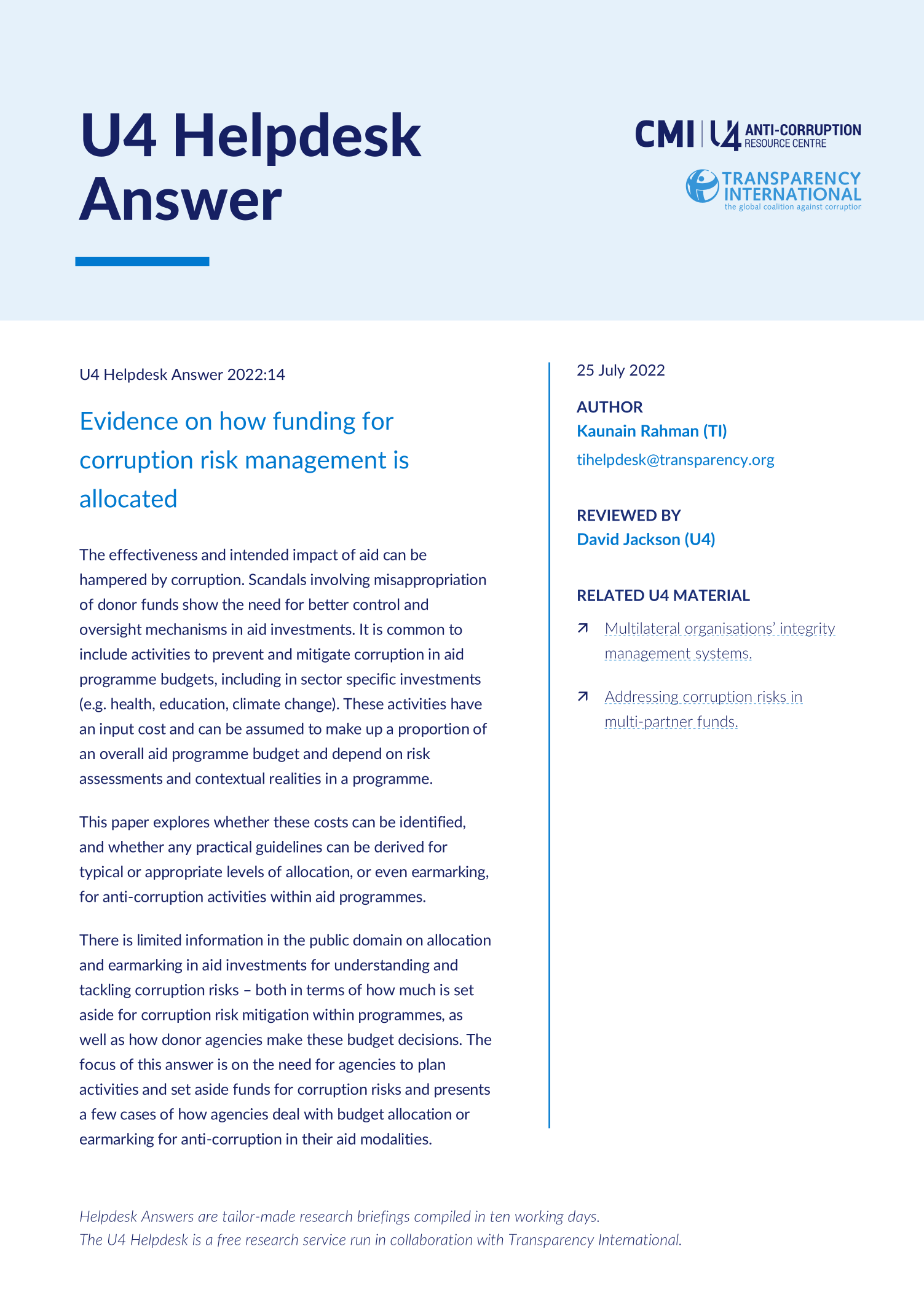Main points
- Aid being lost to corruption not only undermines the intended project impact, but political scandals surrounding aid embezzlement go on to undermine trust for donors in their national context.
- There are several corrupt ways is which aid money can be misappropriated, i.e., elite capture, embezzlement, bribery, procurement fraud, etc.
- Corruption risk assessments for projects operating in a particular context could be supported by calculating for anti-corruption earmarking in aid investments.
- Donors have varying approaches across the spectrum on how to address anti-corruption as a cross-cutting issue within their programmes.


